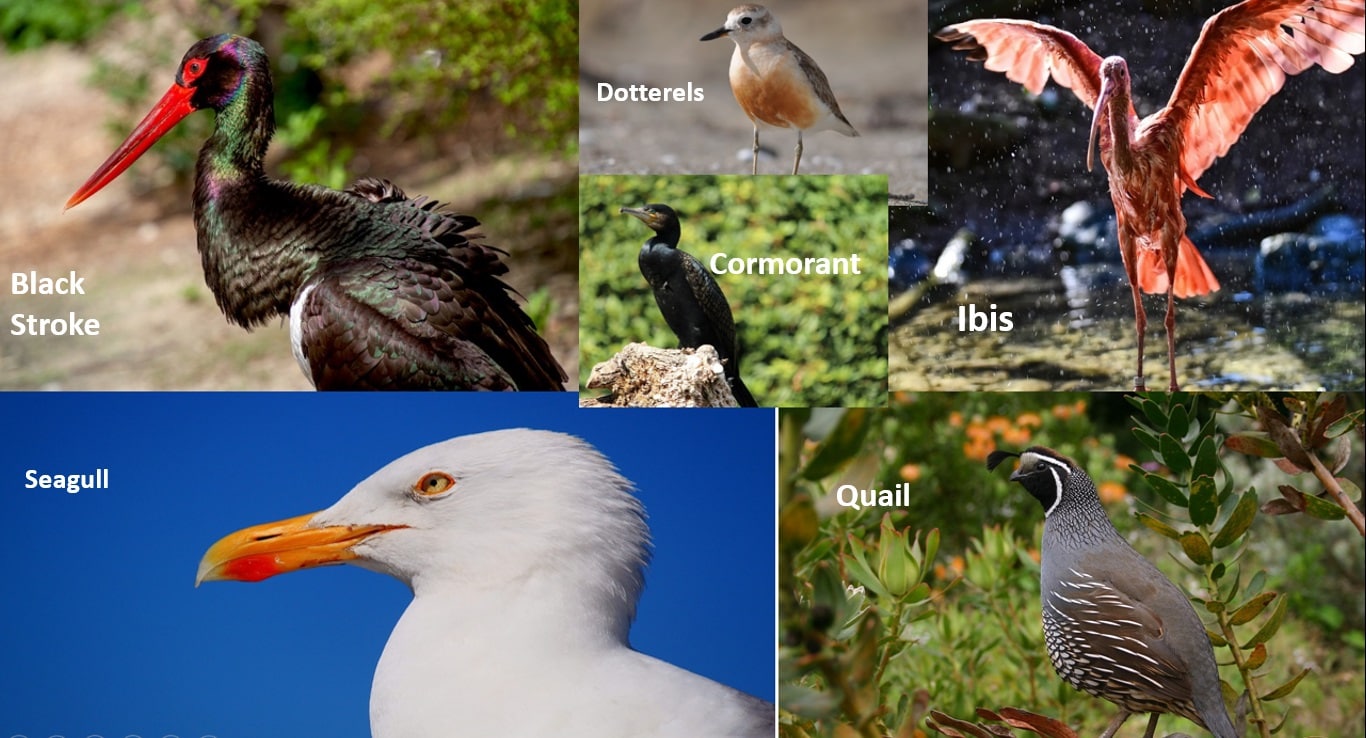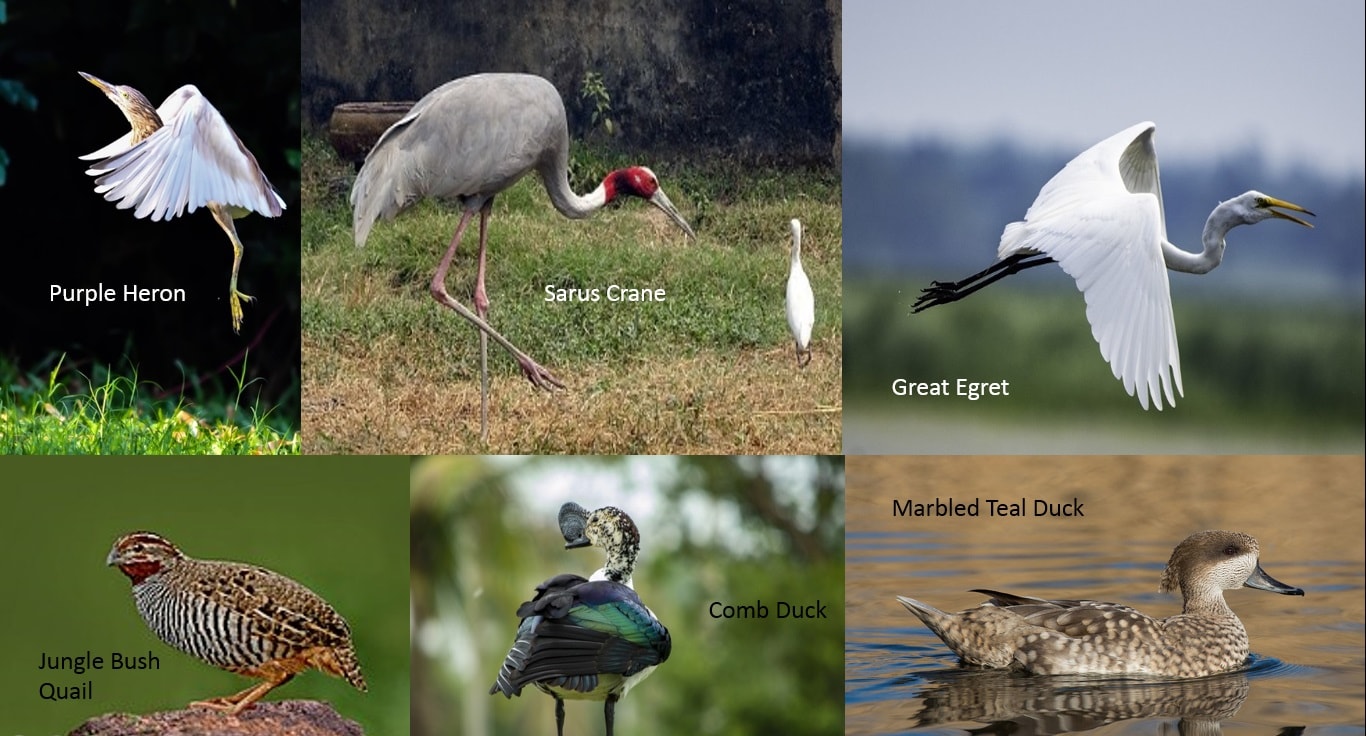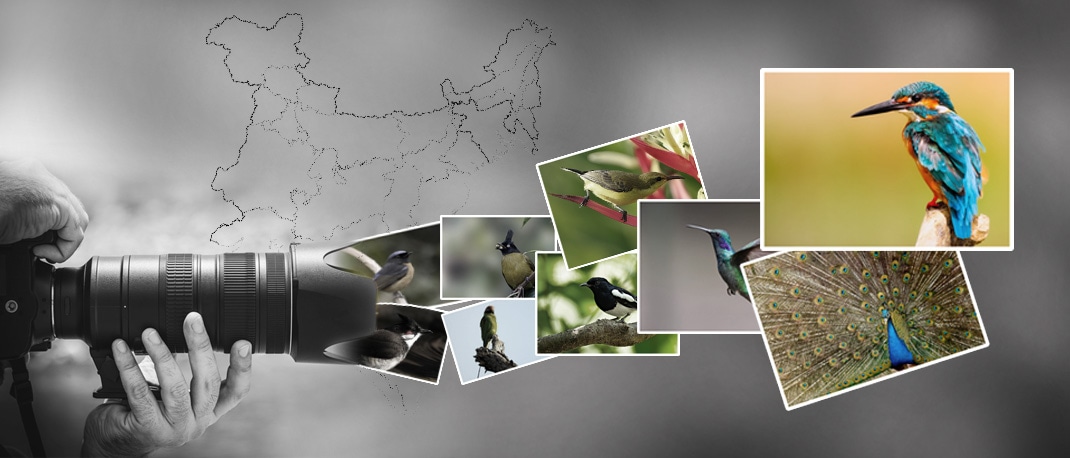India’s rich natural landscape has been a haven for many unique domestic and migrant birds like; Pintails, rare red-necked Grebes and Gulls to Long-billed Bush Warbler, White-tailed Rubythroats, Fire Capped Tits, and Little Forktails among many others and to watch them closely in their surroundings is a visual treat for many bird photography enthusiast. That being said, there are some very well-known bird sanctuaries spread across the Nation offers not only glimpses of some novel birds but also a spectacular view of the region. However, if you are a novice bird photographer who is eager to tick off the names from the list of birds you wish to capture through your DSLR here are the top 5 places you must visit for bird photography.
Jim Corbett National Park (Uttarakhand)
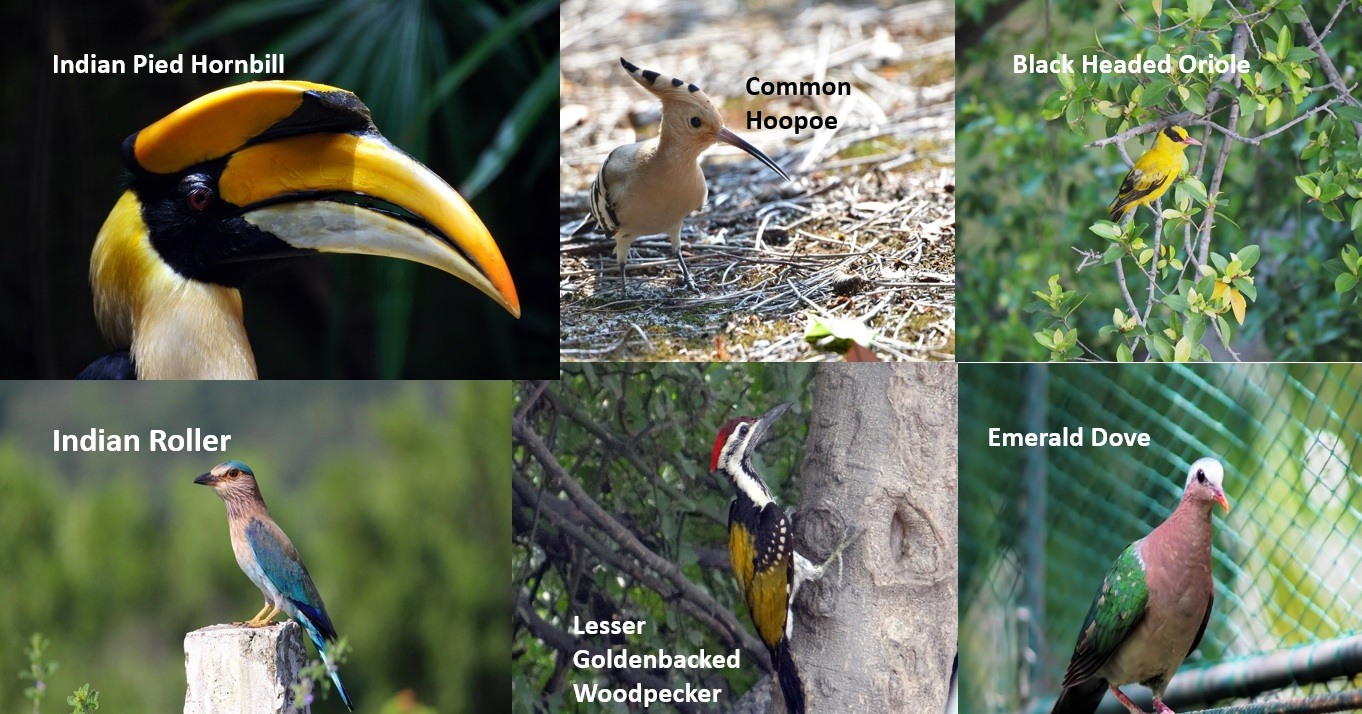
Situated in the district of Nainital, Jim Corbett National Park is among the oldest sanctuary of India which is not just limited to the sight of endangered Bengal tigers but is also a paradise for bird lovers. The DurgaDevi Zone (one of the five tourist zone within Jim Corbett) is a home to more than 650 different species of birds like; Lineated Barbet, Bluethroated Barbet, Crimsonbreasted Barbet, Blacknaped Green Woodpecker, Lesser Goldenbacked Woodpecker, Longtailed Broadbill, Golden Oriole, Storkbilled Kingfisher, Species of Forktails, Darter, Brown Dipper, Crested Hawk Eagle Little Green Heron, Long-tailed Broadbill, Maroon Orioles, Pond Heron, Booted Hawk Eagle, Pallas Fishing Eagle, Himalayan Greyheaded Fishing Eagle, Cinerous Vulture, Crested Serpent Eagle, Kestrel, Black Partridge, Kaleej Pheasant, Red Junglefowl, Common Peafowl, Himalayan Pied Kingfisher, Lesser Pied Kingfisher, Common Kingfisher, Blackheaded Oriole, Green Bee eater, Indian Roller, Great Pied Hornbill, Hoopoe, Common Grey Hornbill, Broadbilled Roller, Indian Pied Hornbill, Great Hill Barbet, Redwattled Lapwing, Spurwinged Lapwing, Pintailed Green Pigeon, Blue Rock Pigeon,Turtle Dove, Whitebreasted Kingfisher, Chestnutheaded Beeater, Bluetailed Beeater, Rufous Turtle Dove, Alexandrine Parakeet, Roseringed Parakeet, Common Myna, Indian Ring Dove, Spotted Dove, Emerald Dove, blossomheaded Parakeet, Common Hawk, Black Drongo, Greyheaded Myna, Rosy Pastor, Bronzed Drongo, etc.
How to Reach Jim Corbett National Park:
Well if you are already planning your visit to Jim Corbett to capture different birds through your lenses here’s a quick information on how you can reach their.
Ramnagar is perhaps the best approach to the Corbett National Park which forms the headquarters of CTR (Corbett Tiger Reserve). This small city is well connected by road and rail network with major cities of India like Delhi, Moradabad, Nainital and Bareilly. Once you reach Ramnagar, then it takes only half an hour to reach Corbett National Park. The park is around 15 Kms from Ramnagar railway station.
By Air: The Indira Gandhi International Airport (Delhi) is the nearest International Airport to Jim Corbett National Park. And, if you are looking for the closest domestic airport it’s the Palam Airport.
By Rail: The railway station in Ramnagar receives trains from different major cities of India like Delhi, Moradabad and Bareilly. You can check out for direct trains like; Ranikhet Express, Corbett Link Express and Kathgodam Express to reach Ramnagar.
By Road: Ramnagar has a very good network of road that connects the different cities. The Jim Corbett National Park is situated at an approximate surface distance of 260 Kilometer from India’s national capital Delhi. The state government of Uttarakhand plies buses at a short interval of time from Delhi, Moradabad, Haldawani, and Nainital to Jim Corbett National Park.
Booking Procedure To Visit
If you are an Indian National you are required to book your visit 45 days prior your visit. Also your Name, Age, Gender, ID Proof (Passport No., PAN No., Voter ID, Aadhar No.) is to be provided to carry out the further booking process. Whereas, as foreign Nationalist you are required to book your visit 90 days (3 months) before. Passport details are mandatory for reservation purpose.
You can avail for two safaris in a day one in the morning and the other in the afternoon.
Chilika Lake Bird Sanctuary (Odisha)
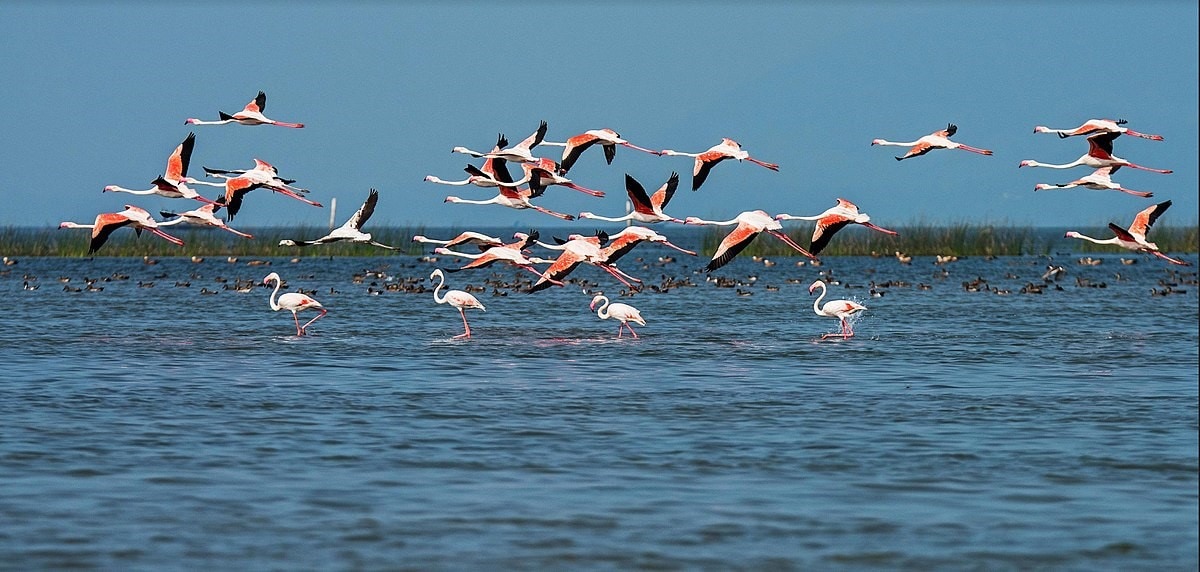
Located near Puri (Odisha) and covering over 1,100 km of area, Chilika Lake is known as the largest coastal lagoon of India and the second largest coastal lagoon in the world. Designation as the first Indian Wetland of International importance under Ramsar Conversation in 1981, the Chilika Lake is a home to over 160 species of birds like; White bellied sea eagles, Graylag geese, purple moorhen etc. It proudly host the largest breeding place for flamingos across the globe and is one of the most renowned places to visit for every bird lover and bird photographer. To catch a glimpse of the beautiful winged creatures visit the Nalabana, Mangalajodi and Kalupadaghat Islands.
Here’s How You Can Reach Chilika Lake
By Air: Bhubaneswar Airport a.k.a the Biju Patnaik International Airport is the nearest airport to reach Chilika Lake. You can hire a taxi to proceed towards the lake via airport.
By Train: Rambha and Balugaon are the nearest Railway Stations. Both of which have train connections to cities as distant as Kolkata, Puri, Hyderabad and Chennai. You can take a bus ride from either of the station towards Lake Chilika.
By Road: A part of Chilika Lake is visible from NH5 and the Howrah-Chennai train track. Many buses ply from Baramunda Bus Station (Bhubaneswar) and Badambadi Bus Station (Cuttack) to Balugaon throughout the day, From there, one has to hire a taxi or an auto-rickshaw to reach Barkul or Rambha (In case of Rambha, passengers can alight at Keshpur, which is further ahead from Balugaon, and from there hire an auto-rickshaw).
Booking Procedure To Visit:
There is no fee to visit Chilika Lake. You may visit the site anytime during the week between 6:00 AM – 7:00 PM.
Eaglenest Wildlife Sanctuary (Arunachal Pradesh)
The Eaglenest Bird Sanctuary is India’s best kept Himalayan secrete. Located in the West Kameng district of Arunachal Pradesh, Eaglenest shot into the limelight after the discovery of a new bird species, the colourful Bugun Liocichla, described in 2006 and from then on was suddenly crowded with bird watchers from across the world. With an impressive number of 454 species of birds like; Cormorants, Pheasants, Quail, Junglefowl, Herons, Hawks, Eagles, plovers, Black-necked Crane, rails, Black Stork, Oriental White (Black-headed) Ibis, ducks, dotterels, lapwings, ibisbill, waders, Small Pratincole, Stone-Curlew (Eurasian Thick-knee), gulls, and shrikes etc. Eaglenest is a perfect place for capturing the rarest of the birds in action through your lenses.
How to Reach Eaglenest Sanctuary (Arunachal Pradesh)
By Air: Tezpur is the nearest airport to Eaglenest Wildlife Sanctuary at a distance of 150 km. Guwahati Airport (335 km) is another renowned International airport close to the sanctuary. Take a taxi to reach the sanctuary from the airport.
By Rail: Bhalukpong is the nearest railhead to Eaglenest at a distance of 94 km. it is advisable to hire a cab to ahead to the sanctuary.
By Road: Tawang-Tezpur road connects the sanctuary with popular cities like Tawang – 25 km, Tezpur – 150 km, and Bomdila – 50 km. Bus and taxi services can be easily availed from the above-mentioned cities to the sanctuary. Tezpur to Tenga is 17 km and takes around 3.5 hours to travel. Tenga is easily accessible from Guwahati or Tezpur. Upon reaching Tenga you can hire a car and head for Lama Camp (one of the few camps that fall en route Eaglenest Wildlife Sanctuary). You will come across a Sign – Chung village right before the sanctuary’s entrance.
Booking Procedure To Visit:
You need to pay an entry fee of INR 100 and INR 300 extra for carrying your cameras along with you. Apart from this, the charges of hiring a guide would cost you roughly around Rs. 2,500 ($35.15) per day.
Bharatpur Bird Sanctuary (Rajasthan)
Bharatpur Bird Sanctuary a.k.a Keoladeo Ghana National Park, is another famous Bird Sanctuary that host around 366 bird species like; Herons & Egrets, like Grey Heron, Purple Heron, Pond Heron, Little Green Heron, Great Egret, Intermediate Egret, Cattle Egret, and Little Egret as well as marble teal, Comb Duck, Jungle Bush Quail What makes this place even more interesting is that you can explore the area via different mode of commute like, Bicycle, Cycle Rickshaw or Horse Carriage (Tonga). If you are a cycle enthusiast you can rent a bicycle for INR 50 – 100 per day or if you want to continuously click pictures you can avail for the cycle rickshaw on hourly basis for INR 100 which is usually arranged by park officials. If you plan to experiment around and have more fun you can choose a horse carriage or Tonga to explore and closely encounter the various birds in the sanctuary.
How to Reach Bharatpur Bird Sanctuary
Bharatpur is easily reached by bus or train, also private cabs from New Delhi or Agra can be hired. The Park is pretty close to the bus stand and railway station.
By Air: Delhi and Jaipur are the nearest airports for Bharatpur Bird Sanctuary.
By Rail: The nearest railway station is Bharatpur Junction
By Road: Bharatpur is well connected with other parts of the country by very fine roads. You can travel through your own vehicle too. Although there are regular buses are available from Delhi, Mathura, Jaipur, Alwar and neighboring.
Booking Procedure To Visit:
You can visit Bharatpur Bird Sanctuary is open round the year from dawn to dusk. The entry fee charges is INR 25 for Indian Citizen and INR 200 for foreign citizens.
Sultanpur Bird Sanctuary (Haryana)
The Sultanpur Bird Sanctuary is not only a popular weekend gateway for residents of Delhi, Gurgaon, Faridabad but also a hotspot for catching a glimpse of around 250 colourful species of birds. The Bird Sanctuary has four watch towers (machans) in different corners that allow to get a clear view of the birds in the vicinity. Some of the popular finds include; Northern Pintail, Greater Flamingo, Common Teal duck, and Siberian cranes. On certain season’s you will find several migratory birds near the Sultanpur Lake such as Siberian cranes, greater flamingo among others.
How to Reach Sultanpur Bird Sanctuary
By Air: Nearest Airport: Indira Gandhi International Airport, New Delhi- 35 km. Take taxi/bus from the airport.
By Rail: Nearest railway station: Garhi Harsaru on Delhi- Rewari Railway line.
By Road: Railway station: Take Metro from New Delhi to Huda City Centre Gurgaon and make arrangement for local conveyance from there
Booking Procedure To Visit:
There could be an entry charges of INR 5 for Indian Citizens, INR 40 for foreigners, INR 10 for still cameras and INR 500 for video camera. You can visit the Sanctuary between 8 AM-6:30 PM.
Photographing birds through those lenses of your DSLR often requires great patience and perseverance, but the sight of beautiful and exotic birds in their natural habitat is an exhilarating experience in itself. If you too have had such experiences then do share them with us. Also if you liked our article then do share it with your friends and family who love bird photography.
Bird PhotographyCameradestinationsexplorephotographyreliance digitalResource Centretravel


